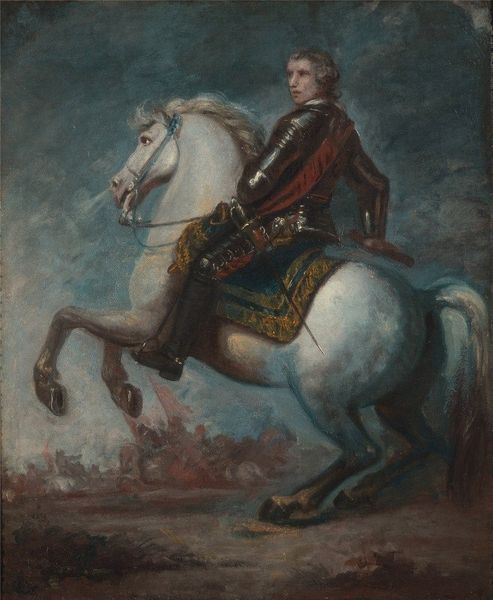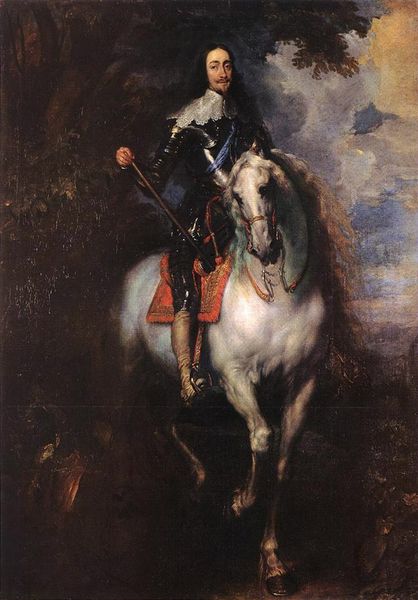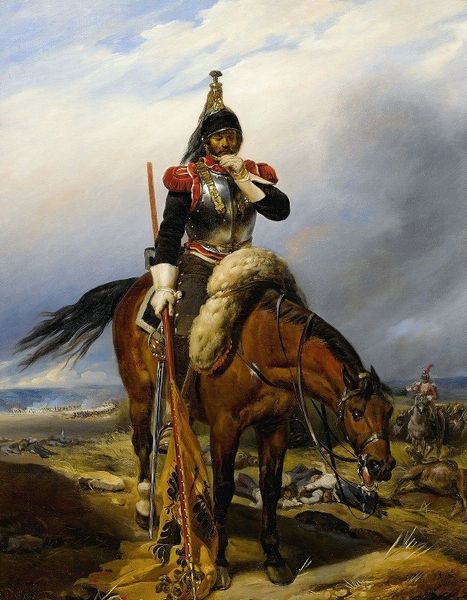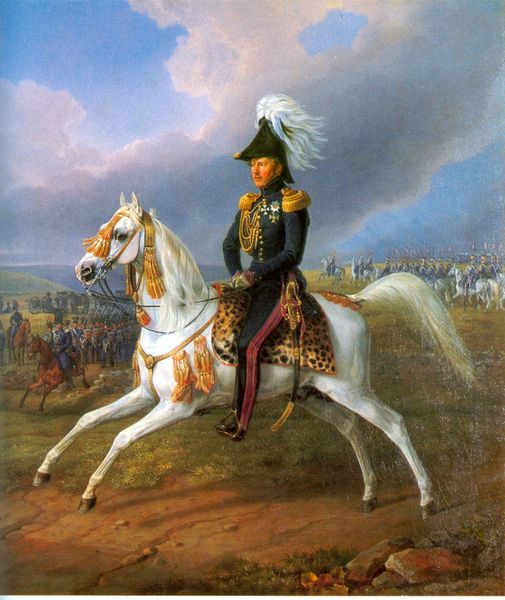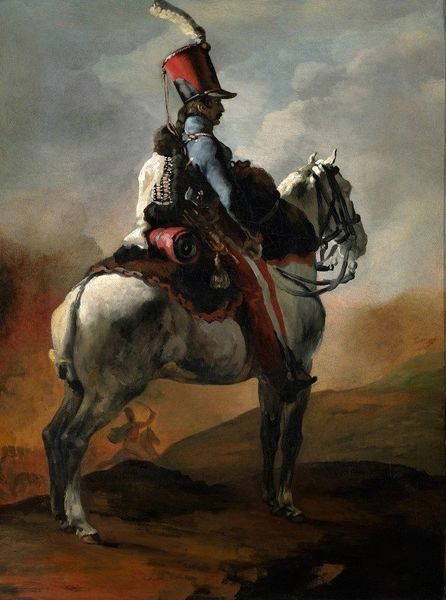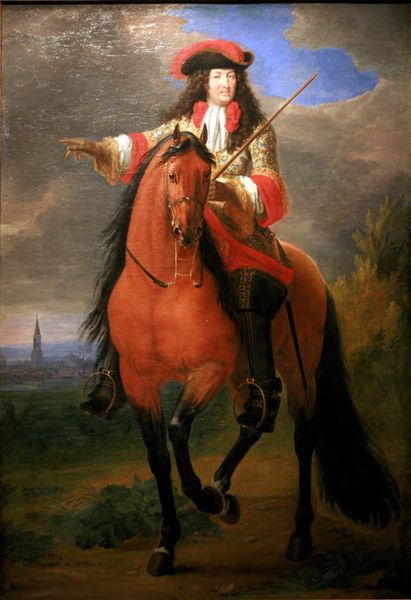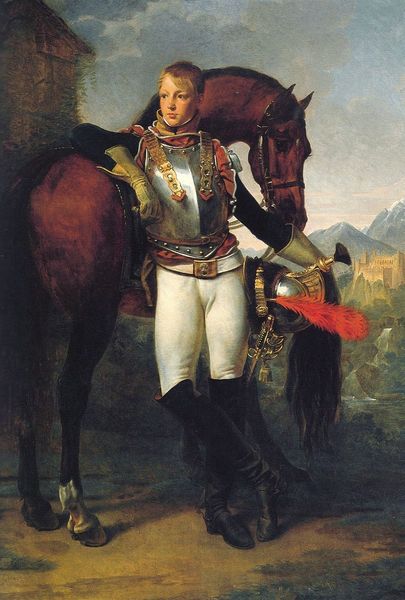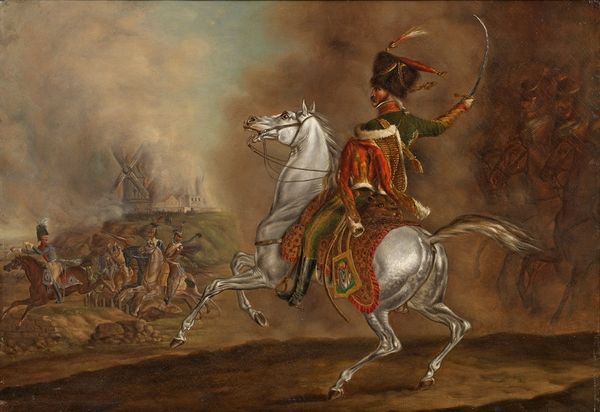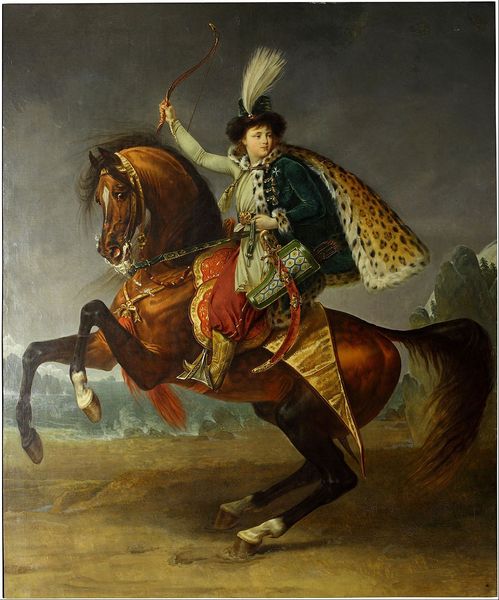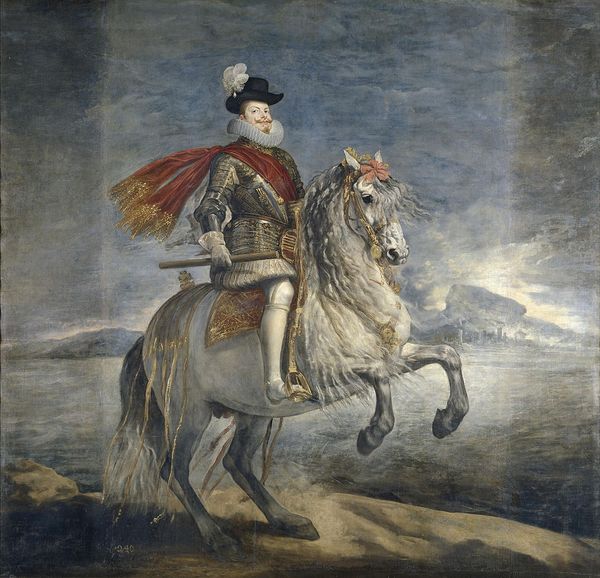
painting, oil-paint
#
portrait
#
figurative
#
baroque
#
painting
#
oil-paint
#
landscape
#
figuration
#
oil painting
#
animal portrait
#
history-painting
#
erotic-art
Copyright: Public Domain: Artvee
Anthony van Dyck’s “Equestrian Portrait of the Emperor Charles V” is made with oil paint, a substance prized for its versatility. Van Dyck masterfully blends pigments to create a rich tapestry of textures, from the sheen of armor to the soft coat of the horse. Oil paint is a forgiving medium, allowing for layering and adjustments, and Van Dyck’s skill enabled a photorealistic depiction of status and power. Consider the details of the armor, each piece carefully rendered with highlights and shadows. This isn’t just about aesthetics; it's about conveying the Emperor's might. Producing such a painting involved a workshop, where assistants would grind pigments and prepare the canvas. Van Dyck’s authorship then lay in the application of this material. His brushstrokes, visible upon close inspection, capture the energy and movement of the scene. Ultimately, the painting is a product of skilled labor, both by the artist and his workshop, combined with the symbolic weight of materials to convey a message of imperial authority.
Comments
No comments
Be the first to comment and join the conversation on the ultimate creative platform.
